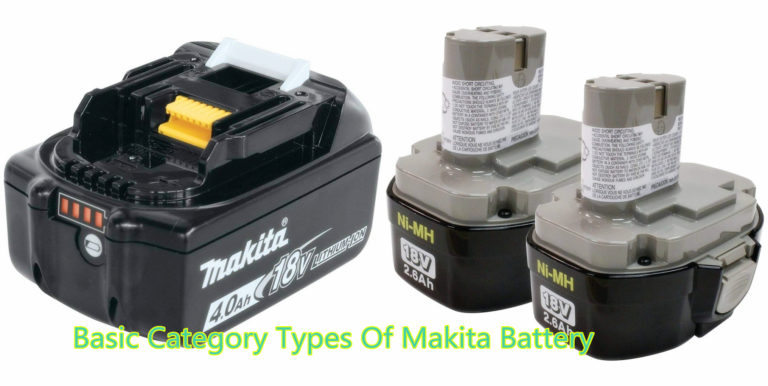The world of power tool batteries has been going through major technological advancements. Currently, many homeowners, craftsmen, and businesses have more options when it comes to selecting the best battery for their cordless power tool. They can already determine what works well for them in terms of capacity, compatibility, longer runtimes and extended cycle life of their batteries.
Ideal power tool batteries function better when well-aligned to the machine and the user. Components and features include as the perfect amount of battery capacity, charge time and temperature tolerance. So, the result is that many brands are working around the clock to meet the needs of all users.
Check: The Best Power Tool Battery You Can Buy Now
What Do All the Battery Characteristics Mean?
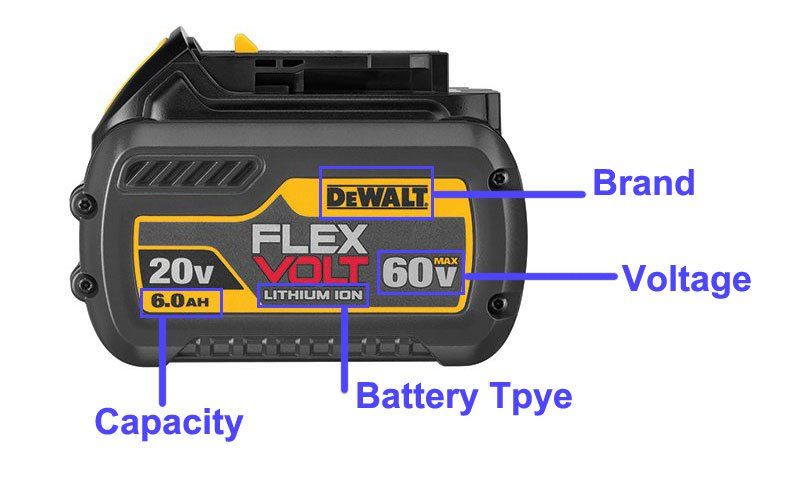
Cycle
The cycle of a battery is determined by the number full charge and discharge cycles. This is before its functional capacity falls to below 80% of its original capacity. A battery’s life cycle takes into consideration the number of charges and discharges before it becomes obsolete.
There are many factors that determine the number of cycles that a battery undergoes before it makes its final bow; these include the discharge rate and depth of discharge. The battery’s operating temperature and charging methods are also key considerations.
Self-discharge
Self-discharge occurs when the electrical capacity of the battery is lost, mostly because the cell is sitting on the shelf and not active at all. Electrical and internal chemical reactions within the cell are what initiates self-discharge, in what looks like the exertion of a small external load. This automatically reduces the stored charge of the battery.
Self- discharge is one key reason for the decrease in the shelf life of a battery. When in use, the battery tends to function at less than full charge simply because of self-discharge.
Memory Effect
Also known as lazy battery effect, memory effect occurs when there’s a reduction in the durability of a battery’s charge. This is a consequence of repeated recharging after incomplete discharge in earlier usages. The frequent recharging in effect causes the crystalline structure of the electrodes to manifest differently.
The capacity of the charging system is also gradually reduced. In this case, the battery tries to remember and function on the small capacity. There are several causes of memory effect/ these include:
- Repeated partial charges
- The make of the battery; there are some models that develop memory effect in cases of incomplete discharge before recharging.
- High or low rates of discharge
- When the charging time is limited and inadequate
- The charger is itself is poorly designed or malfunctioning
Different designs and models react differently to the memory effect. Some of them do not experience memory effect at all, while others undergo significant levels of the same.
Voltage
Basically, Voltage in a battery signifies the difference in electric potential between the positive and negative terminals of a battery. One terminal is positively charged, and the other is negatively charged. If there is a big difference in the potential, it leads to a greater voltage. In essence, voltage is what determines the amount of energy a battery can discharge at one single time.
Charging a battery makes the voltage rise while discharging makes the voltage to fall low. It is like stretching and releasing a rubber band. There is an increase in both temperature and pressure during charge, hence increasing the voltage. Over-exertion and uncontrolled increase of the same can easily lead to rupture and explosion of the battery. In the same way, discharging the battery below the recommended capacity’s lower voltage can also lead to permanent damage to the battery.
Generally speaking, the choice of voltage depends largely on work density. For instance, batteries that come in lesser voltage handle lighter work. The amount of voltage for that kind of work is 7V-15V, while heavy work translates into more than 18V.
Capacity
Battery capacity is determined and measured in ampere-hours. As such, Ah is the discharge current that a battery delivers over a period of time. It is possible to install with a higher Ah, than specified, to allow for longer runtime; at the same time, using a smaller pack than specified, allows for shorter runtime.
As is expected, chargers often have some tolerance when it comes to Ah. This then allows larger batteries to take a longer time to charge, as compared to a smaller pack.
Type of Power Tool Battery
Batteries are essential, as, without them, devices and tools become useless. When it comes to using power tools, there are so many options in terms of specifications, performance and even features. Your selection is based on what kind of features suit your power tool the best, but also on the amount of work output you would like to achieve.
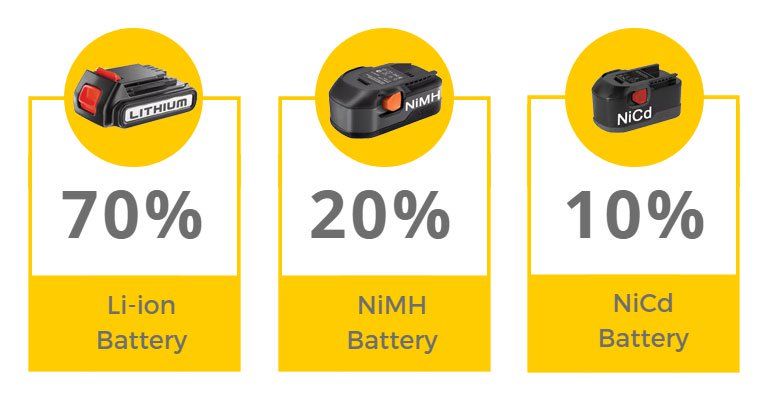
NiCd
Known as Nickle Cadmium in full, these battery types have been in use for a much longer time than the rest. They remain in use because of their tough construction. Apart from being less expensive, they have a longer cycle life, too.
Pros
- They are quite tough, hence difficult to suffer damage as a result of impact and heat.
- You have many options in terms of sizes and shapes.
- When well taken care of, the battery is quite long-lasting.
- With a cycle life of more than 1000 charges, they are significantly durable.
- Compared to other types of batteries in the same category, they are less expensive.
- The current flow that they generate is quite strong
Cons
- NiCd batteries are naturally heavy and inconveniencing in terms of mobility.
- In comparison to other types, they have lower charging capacity and lower energy density.
- If they are not allowed to deep discharge once each month, they can suffer damage and a shorter cycle life resulting from the memory effect.
- The toxicity metals that are found in these batteries can be harmful to the environment and disposing of the same after use may be challenging.
NiMH (Nickle Metal Hydride)
Being one of the new technologies on the market, NiMH is actually an improved version of NiCd. This type is more efficient as it comes with increased capacity. Here are the clear advantages of NiMH.
Pros
- They operate at a lower voltage and are known for their ability to power devices for longer times as compared to other batteries.
- They are much lighter and easily portable.
- They are less costly as compared to Li-ion.
- They are available in standard sizes such as AA, C, and D. This allows for their use in everyday situations apart from the power tools.
- They are also environmentally friendly and you can safely dispose of them.
Cons
- While in storage, NiMH is known to lose about 1% to 5% charge every day. The meaning of this is that you might just have to charge it right before use. In case of an emergency, this could be quite inconveniencing.
- If you recharge a NiMH battery that has been fully discharged, it results into voltage depression and voltage depletion; this causes a shorter cycle life of the battery.
- The batteries are very sensitive to temperature, so you need to avoid extreme temperatures. The ideal temperature is about 33 degrees centigrade.
Li-ion (Lithium Ion)
These are the undisputed leader in the category of power tool batteries.
Being the newest, yet most powerful of the three and more expensive, these batteries come with many advantages.
- They are a lightweight. This means that you can fit them in your hand, yet they remain quite powerful and efficient.
- Self-discharge for these batteries is low, so they can stay unused for a long time and yet still work perfectly when you pick them up for use. They will still be as good as new.
- The batteries also present high potential current, which allows you to handle heavy drill workload.
- They are safe and environmentally friendly; disposing of them does not cause harm at all.
- They do not self-discharge and have no memory effect. This allows them to function optimally and have a longer cycle life.
Cons
- Lithium-Ion batteries are more expensive to manufacture; once put on sale, the high price is passed on to the consumers.
- These batteries have shorter cycle life, and they tend to age quite fast in comparison to NiCd and NiMH. You do have to make a replacement within a short period of time.
- There have been reported incidences of overheating, this can happen during recharge.
- They are also sensitive to heat and impact, you have to be careful to store them at recommended temperatures
Comparison of Power Tool Battery Types
A number of characteristics are what define batteries:
- -Cycle life: the cycle life for NiCd is more than 1000 charges; NiMH’s depends on correct storage and charging. Li-ion’s cycle life is short; presenting between 300-500 charges. This is equivalent to 2-3 years of use.
- -Self -discharge: NiCd experience moderate self-discharge of between 15-20%.On the other hand, NiMH has fast self-discharge of 20-30%. Li-ion displays very slow self-discharge and sometimes none at all.
- -Charge time: Charge time for the Nickels is quite fast, while Li-ion charge time is moderate.
- -Capacity: NiCd comes with a low capacity of 1.2-2.2Ah.the capacity for NiMH is moderate with 2.3-3.0Ah.As for Li-ion, its capacity is high at 3.0Ah.
- -Memory effect: If not well maintained, the memory effect for NiCd is usually high, while it’s moderate for NiMH, although this can be avoided with proper charging. Li-ion does not display experience memory effect.
- -Sensitivity: NiCd is tough and not sensitive, while NiMH is highly sensitive to temperature. Li-ion is also quite sensitive to both heat and impact.
How to Choose Cordless Battery Replacement
- Choose a platform that gives you many options for your machine. For instance, the fact that Nickel is becoming scarce should lead you to make a choice that leans more towards lithium-ion.
- The voltage you select should be the one that is more suitable for the type of work you are carrying out. If you work is that of handy types, then you could go for 12V, as it’s a lightweight and small in size.
- For purposes of compatibility, stick to one manufacturer as well as battery type. This is because not all platforms conform to the same compatibility for tools, and switching is likely to mess up your machine and inconvenience you as well.
Power Tool Batteries Compatibility and Latest TECHNOLOGY
Power tools need to be compatible with the battery in order to function as required. You can easily encounter problems if the wrong battery is made to work in the wrong power tool. The way to go is to always be on the lookout to ensure that your power tool is as compatible as possible with the battery. Manufacturers are in a good position to know and identify correct compatibility.
It would be useful but not essential to read the earlier articles:Interchangeable Compatibility Is A Must For Cordless Power Tool Battery Packs
1. Dewalt Batteries: EXTREME PERFORMANCE
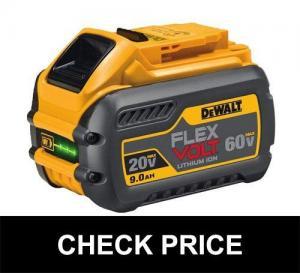 As recently as 2016, Dewalt has launched a superior version of the world’s first battery, Flexvolt. This Dewalt battery automatically changes its voltage as the user changes tools. What is more, it offers both increased power and extended runtime at work. The latest models that Dewalt has introduced recently include:
As recently as 2016, Dewalt has launched a superior version of the world’s first battery, Flexvolt. This Dewalt battery automatically changes its voltage as the user changes tools. What is more, it offers both increased power and extended runtime at work. The latest models that Dewalt has introduced recently include:
- 12.0 Ah Flexvolt battery; these batteries have been built to work with Dewalt tools meant for higher–power applications. With a compact size the same as their 9.O Ah Flexvolt battery, users rest assured of 6 times runtime. This is so, especially when used with Dewalt’s 20V Max tools.
- Another excellent model is the 6.0Ah Flexvolt battery. This one comes with 4times runtime and switches its voltage to easily support MAX tools with 20V,6OV as well as 120V.
Dewalt Batteries Compatibility
20V MAX batteries power 20V MAX tools.
2. Bosch Batteries : CoolPack 2.0 system and Changeover from 10.8V to 12V
Bosch is a leader when it comes to innovative battery technology. Their CoolPack technology boasts of superior lithium-ion batteries that are greatly protected by good material. In addition, these batteries are 100% compatible with power tools; they have full percentage runtime as well as full percentage longer life.
What is evident is that other Bosch batteries are stocked by type. In the Li-ion category, you are met with 10.80V, as well as 18V battery types. You will also not miss out on Li-ions’ lesser voltage but equally, useful 7,2V meant for lighter projects.
NiCd latest series at Bosch are found in 12V,24V as well as 9.6V.In the meantime, NiMH comes in 12V,3.6V,14.40V and the greatest of them all at 36V.
Bosch Batteries Compatibility
For Bosch, they simply know that if the battery does not fit the power tool properly, then it is not the right one for the tool. The design of their tools means that the corresponding battery fits in as required; any slight deviation is a no.
The advantages of Bosch lithium-ion batteries are that they are made of sturdy and robust construction. They are also the smallest and lightest batteries on the market. They present no memory effect, and there are negligible amounts of self-discharge. What’s more, they are very powerful and not sensitive to temperature; they can easily operate at 0 degrees centigrade.
3. Makita Batteries : Lithium-ion Xtreme Technology
These are market winners in the area of lithium-ion batteries. The batteries are known for their impressively full compatibility to power tools. For instance, the newly introduced Makita 18V Lithium-ion 6.0 Ah is extremely powerful. It comes with increased performance and presents an exceptionally longer runtime. With a charge time of just 55 minutes, this battery is one that allows convenience.
- Another introduction to their recent models is their 18V, 5.0Ah, and taking just 45 minutes to charge.
- Meanwhile, their 18V 4.0Ah is also not left behind. With its 36 minute charge time, it equals its counterparts the 6.0 Ah,5.0AH, and 3.0Ah in weight and size as well.
- The 18V LXT power tools conveniently work well with 3.0Ah and 1.2Ah batteries.
Makita Batteries Compatibility
For instance, if your 18V power tool has a star on the connector plate, then you automatically know that it is compatible with the 18V, 6.0Ah, 5-0V, 4.0V and 3.0V battery. If you purchase an 18V Li-ion battery, it is built to work well with your 18V cordless power tool.
4. Milwaukee Batteries: REDLITHIUMHIGH OUTPUT BATTERY
The latest technology at Milwaukee is their M18 REDLITHIUM HIGH OUTPUT HD12.0 battery pack. With this pack, you get 50% more power. The increase in more power output is what results in more work output. The fact that it also runs on 50% cooler than usual makes this a battery of choice for increased efficiency. Craftsmen can apply their heavier power tools even harder and for prolonged periods.
Milwaukee M18 REDLITHIUM HD9.0 battery packs are also part of the latest technology. These enable cordless power tool users to handle even heavier work output than usual and for longer hours.
Not to be left out among these series are M18 REDLITHIUM XC5.0, M12 REDLITHIUM XC 3.0, and M12 XC. All these models come with great features to give superior output and quality which is what all users are truly looking for.
Milwaukee Batteries Compatibility
This battery pack is not only more versatile, powering over 150 power tools; it is also fully compatible with the over 150 power tools. Their intelligent system integrates compatibility in their batteries, charger and power tool.
5. RYOBI Batteries: 18V ONE+ SYSTEM and 40-VOLT SYSTEM
The new kid on the block from Ryobi is their 40 V 5.0 Ah Lithium-ion battery. It exudes extraordinary power and comes with longer runtime. It is an improved version of the standard RYOBI 40Volt high capacity battery. The great thing about it is that its lithium-ion power is fade-free. It also has an onboard battery life indicator.
The other latest series from Ryobi is the 40V 2.6Ah lithium-ion battery, compatible with a 40V machine and 40V charger.
RYOBI Batteries Compatibility
The 40V battery is fully compatible with all RYOBI 4OV power tools and 40V chargers. On the other hand, the 18V ONE+ system is compatible with 18V ONE+ power tools and chargers.
6. Black & Decker Batteries: 20V and 40V MAX* System
The advanced 20V and 40V MAX system are currently one of the most powerful and convenient battery designs for power tools. Within this system, users have more than 20 options to choose from. These include the very powerful 60V MAX 1.5Ah,40V MAX 1.5 Ah, Li-ion battery,20V MAX 1.5 Ah Li-ion and many others of the same category and alignment.
The advantage with these batteries is that they do not create memory effect and come as lightweights. What is even more exciting is that the batteries have a longer runtime.
Compatibility
The 40V batteries are fully compatible with all BLACK+DECKER 40V power tools. Likewise, 20V MAX series align well with 20V MAX tools. The list continues just in the same way, as the 60V MAX is part of the 60V MAX system.
7. Metabo Batteries: BATTERY PACK TECHNOLOGY
With a battery pack system introduced by Metabo comes in form of 18V,10.8 25.2 and 36V battery systems. This Metabo battery technology remains one of the leading brands on the market.
- Their 18V battery pack system comes with favorable options of 2.0, 4.0, and 5.2 Ah.
- In the meantime, the 36V lithium-ion battery packs are fully compatible with 36V cordless tools, which work by delivering concentrated energy.
- Metabos’s LiHD technology is among the latest and most vibrant in the industry.
Their battery packs are to be found with 4.0, Ah, 5.5 Ah and 8.0 Ah.
Metabo Batteries Compatibility
This is one battery pack for every application, and it is fully compatible with all power tools that come with the 18V lithium-ion system.
Which is the best power tool batteries brand?
- Their batteries are known for excellent performance and reliability
- They boast of a well-rounded 12Vs and 18Vs category that many users love.
Power Tool Battery Future Technology
1. Carbon-Ion Cell Technology
As power tools continue to be technologically more advanced, there is a gap in terms of sufficient power that can handle them. For some time now, the battery has not progressed in terms of technology as quickly as the power tools have. Despite that being the case, the world is on the verge of a breakthrough when it comes to the power tools sector.
One of the next-generation technologies is the carbon ion battery technology. The batteries are designed to use carbon materials. These come with unique features and advantages. They are not only more sustainable, but they are also friendly to the environment. Emission of harmful substances into the air will be a thing of the past.
2. 20700 Li-Ion Battery
3. New chemistries: LITHIUM POLYMER
Proper Care & Treatment: Charging
- Allow for consistent use. This means that you discharge your power tool as often as required. This then allows the battery to perform the work it was meant to do without being left to sit idle. By so doing, the battery’s electrons are active.
- Avoid partial charging. To keep your battery as healthy as possible, ensure that it always charges until full capacity. The best thing about full charge is that it also gives you a longer run time, than if you just give it an incomplete charge. This especially applies to NiCd and NiMH. Li-ion allows for partial charges which do not harm the battery at all.
- Keep your battery cool and dry. This serves to protect it from overheating and hard shocks. Some of these batteries are quite sensitive to temperature. For instance, if you are using Li-ion, then you have to be very careful of extreme temperature they can easily overheat. At the same time, keep the batteries away any kind of wetness and cold or wet surfaces. The drier your battery remains, the better for its cycle life and durability.
- Avoid deep discharge for your battery. Always be on the lookout to notice if your power tool is showing any signs of weakening in its power. If that is the case, you can quickly charge it; alternatively, you can use a second charge battery to jump-start it. Ensure that the battery drains completely instead of running it down.
- Utilize variable power settings on your power tool. For instance, if you have the option for lower settings on your power tool, using them could make your power tool to function for a long time than if you were applying the faster or medium mode.
- Avoid overcharging your battery. Overcharging has a way of damaging and shortening the cycle life of your battery. To keep it as healthy and working well as possible, remove it from the charge once it has charged to full capacity. This will help you retain it for as long as possible.
How to Care and Store Power Tool Battery
But sometimes this is not always possible, and the battery has to be kept inactive. If you are keeping your power tools in an inactive mode, and your battery as well, there are ways to store it.
- Is your project very power-hungry?, possibly at room temperature to keep your battery.
- Place your battery in the original plastic case in which it came; once you have done that, place it gently in a box or wrap it in a soft cloth.
- If you are storing your Li-ion batteries, ensure that they are just partially charged and not fully charged. They should also just be partially discharged, not fully discharged. The same method can be used for the Nickel batteries. Either way, go by what the manufacturers have instructed on how to store your battery.
- After a long period of storage for your Nickel batteries, ensure that you recharge them once more before you start using. This is because, upon storage, they drain quite fast; and by the time you awaken them, they virtually have no charge in them.
- As for Li-ion, once correctly stored as per instructions, you are bound to start using them without charging as they would still have retained their power.
- If you have a freezer or refrigerator in the vicinity, be careful not to leave your battery on them. Damage can easily occur because of the cold temperatures which can affect your battery.
Aftermarket Power Tool Batteries
Rebuilt Power Tool Batteries
Li-ion, on the other hand, is a no-go zone for rebuilding. Most of the voltage for Li-ion batteries is very high. Anything done out of the ordinary would lead to an explosion.
The advantage of rebuilding is that it helps in recycling old batteries which would otherwise increase toxic levels and bring their harmful effects to the environment.
Power Tool Battery Reconditioning
Conclusion
The power tool batteries industry is indeed an interesting yet critical one. For people wanting to get hold of a battery that is perfect and suitable for their kind of work, great insight and research help you to get one that serves you well.
The types of power tool batteries on the market right now have their own advantages and drawbacks. Still, it is possible to select one that has minimal disadvantages, and which matches the work output that you would want to achieve.
At last please share this guide with anyone you know that needs help with their cordless Power tool batteries. The more everyone knows, the best replacement rechargeable batteries will choose that’s good news for everyone. Thank you.

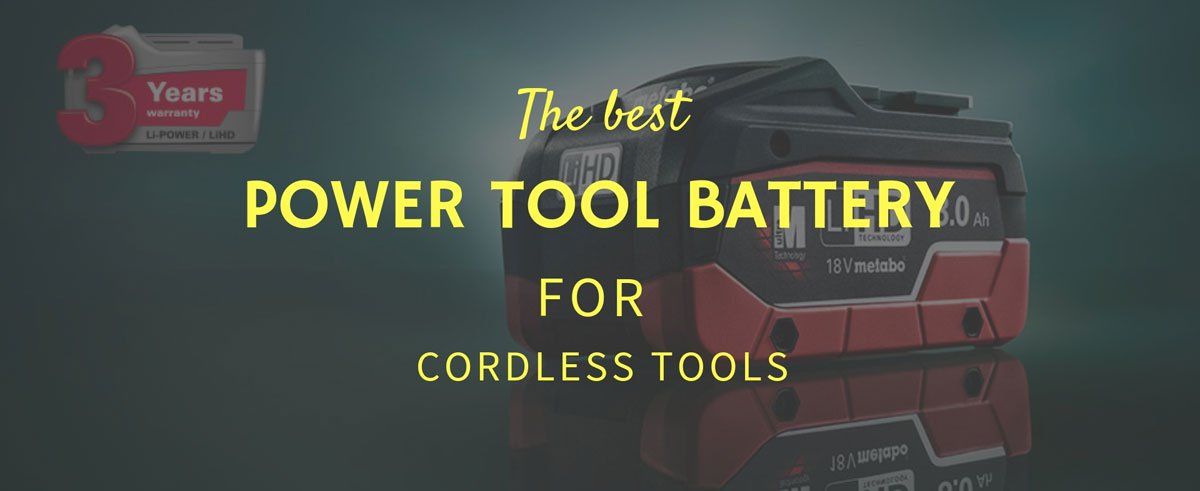
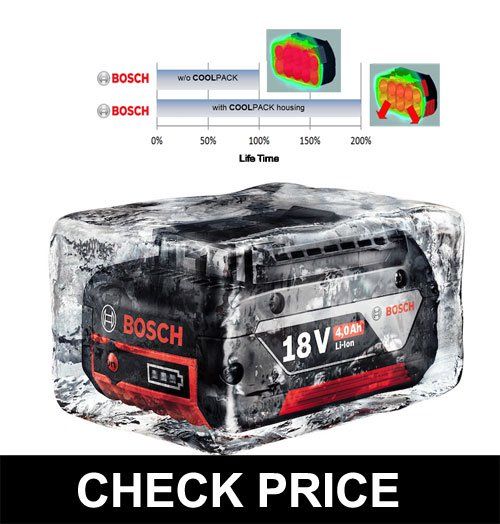
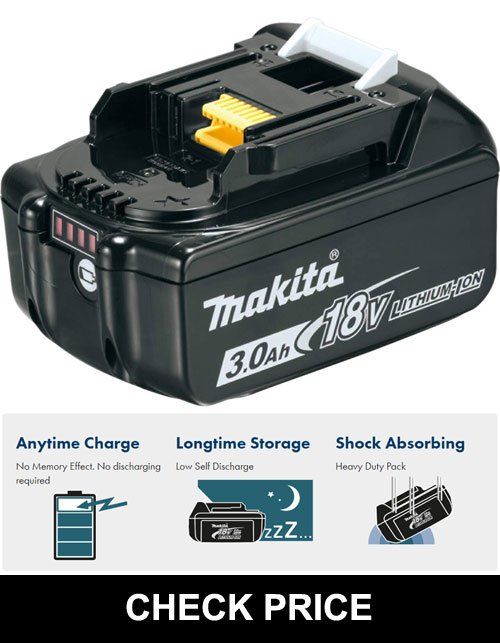
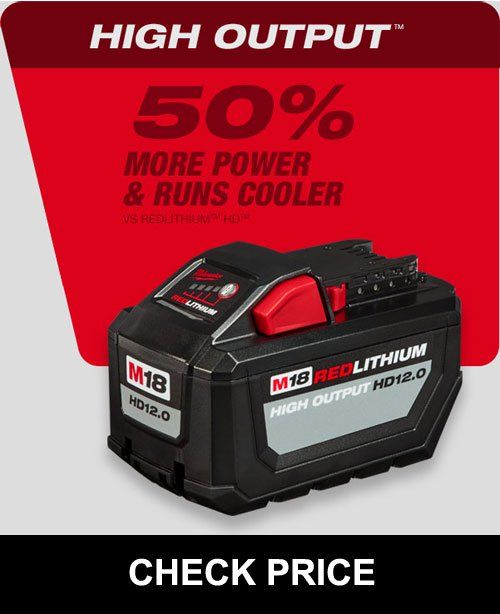
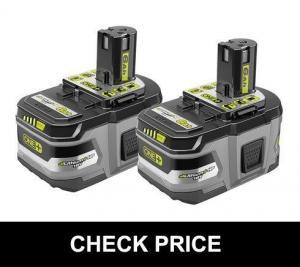
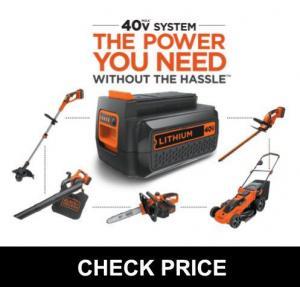
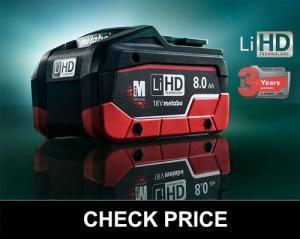
![Power Wheels Battery Adapters [Best Options for Dewalt, Milwaukee, Ryobi, Makita Batteries]](https://www.powertoollab.com/wp-content/uploads/2021/12/Power-Wheels-Battery-Adapters-768x590.jpg)
![Best cordless tools for contractors : Why you should buy? [Upate 2020]](https://www.powertoollab.com/wp-content/uploads/2017/12/Best-cordless-tools-for-contractors-768x433.jpg)
